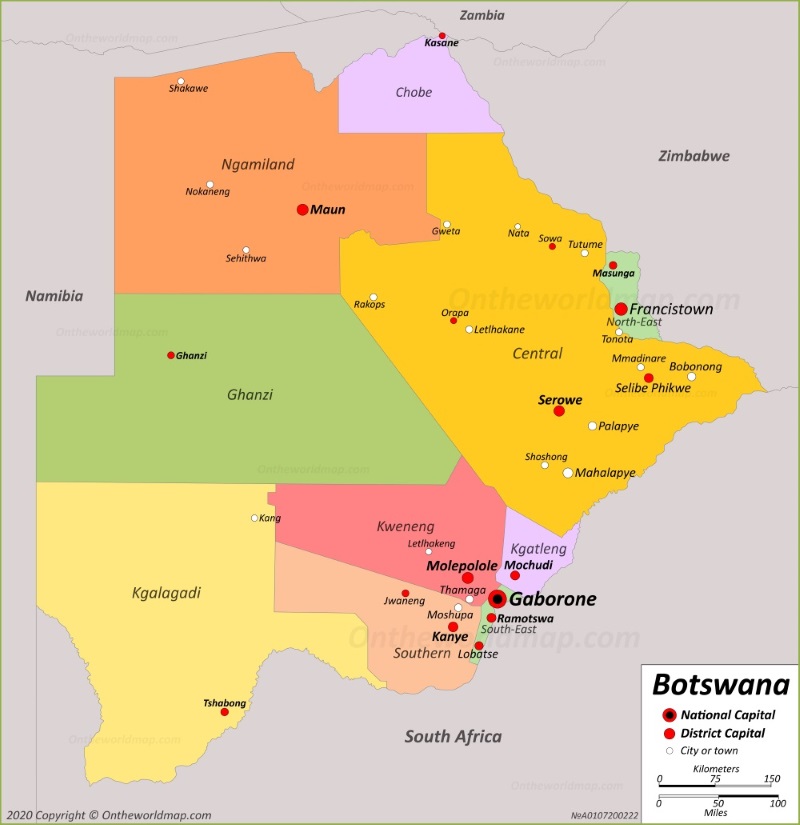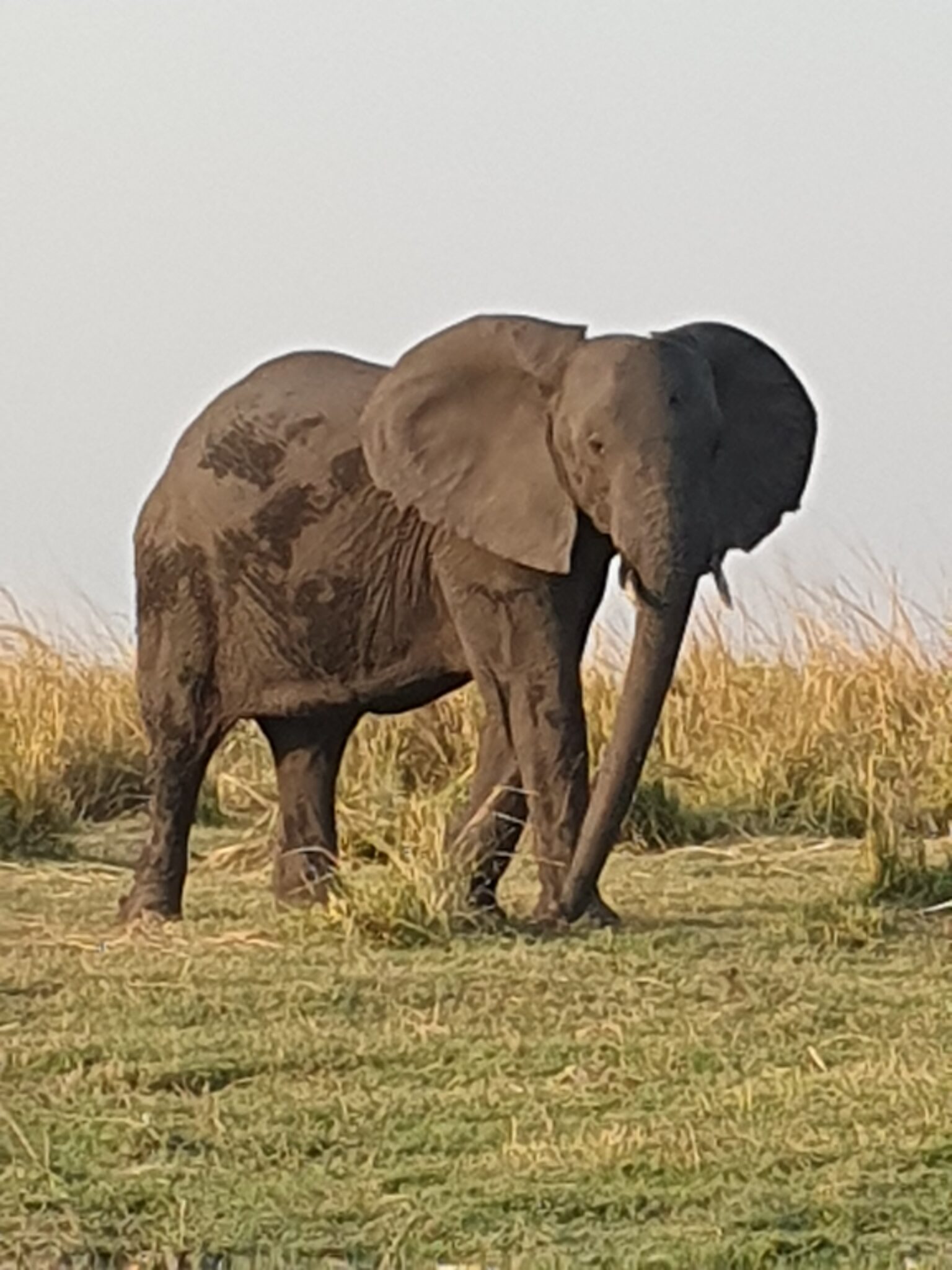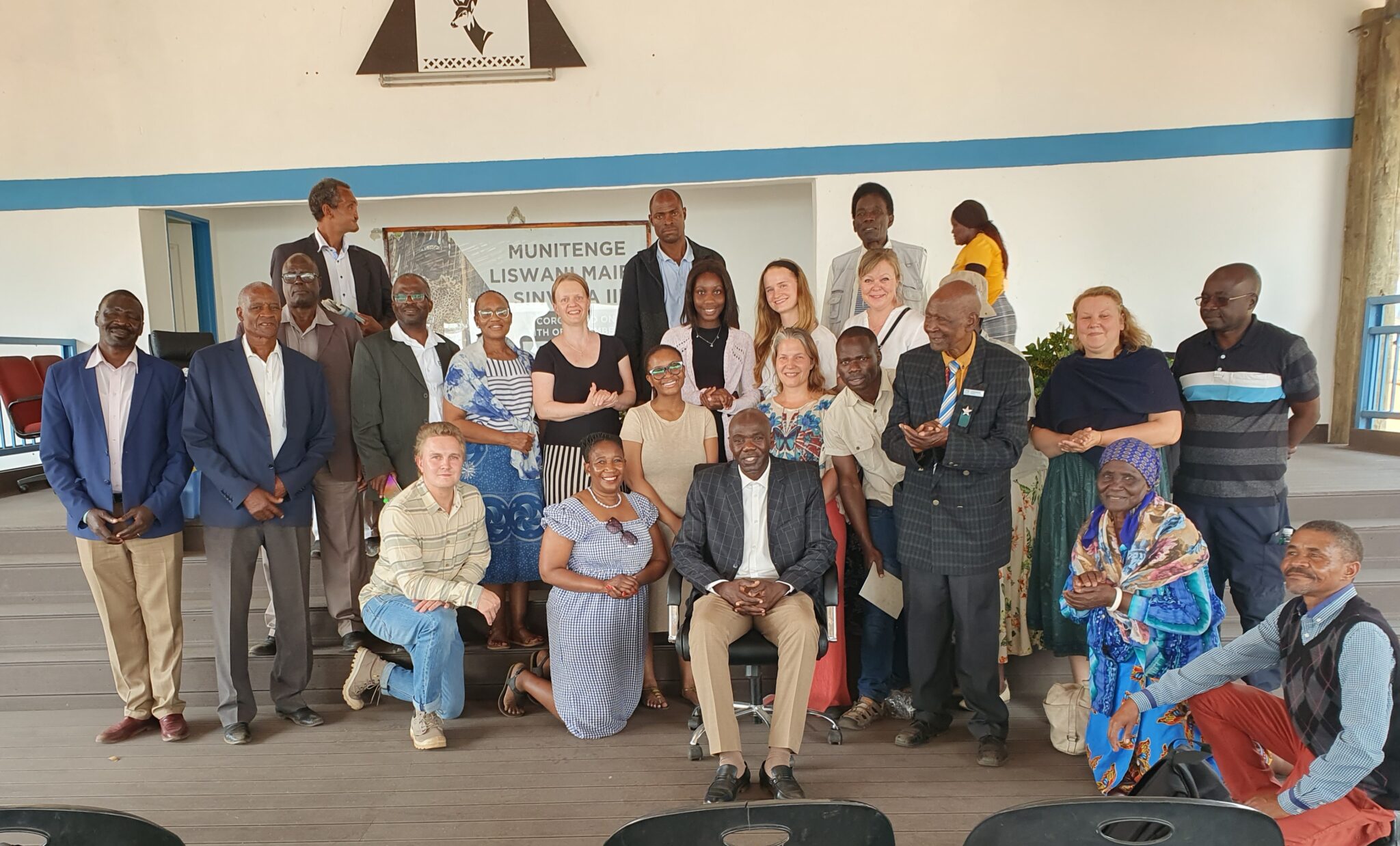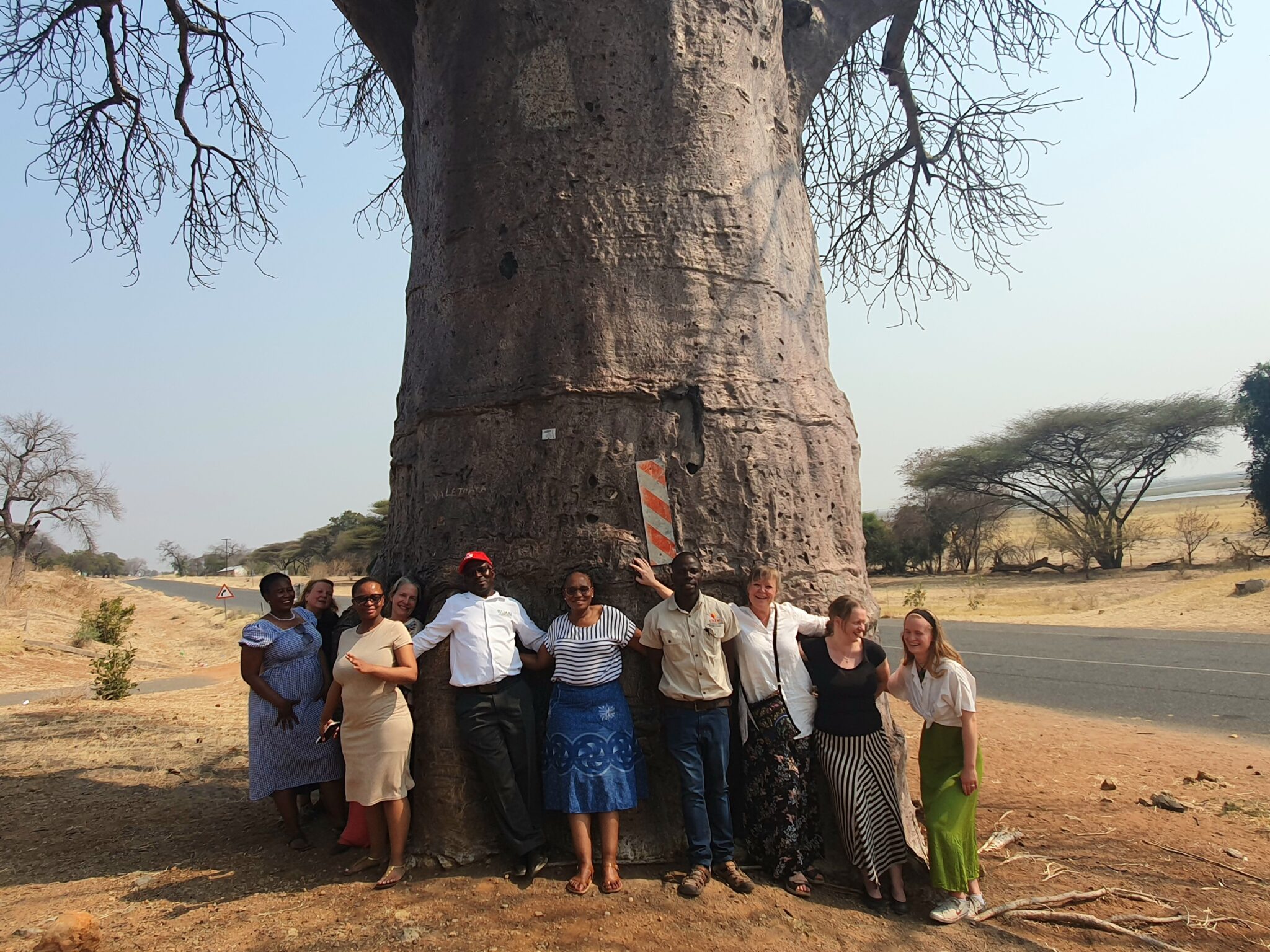Learning about sustainable development in Botswana

In August 2023 a team of university students and teachers from Finland visited Botswana for an international mobility week of PEBES project organised by the Botswana University of Agriculture and Natural Resources (BUAN). Its aim was to provide students and staff with knowledge and understanding on sustainable natural resources management. During the week in Botswana the participants had the opportunity to hear presentations by local experts and learn about traditional conservation and cultural traditions.
Botswana is famous for its wildlife
Team Finland consisted of two teachers and four students from Humak UAS and University of Turku. We arrived in Botswana on the 19th of August and were welcomed by Dr Joyce Lepetu, Associate Professor and PEBES project coordinator at BUAN. We spent one night in Gaborone, the capital of Botswana, before heading to Kasane in Chobe region in Northern Botswana where our Namibian colleague and students joined us.

We traveled with BUAN’s minibus about 925 km from Gaborone to Kasane via Francistown that is the second biggest town in Botswana. There are only 2,3 million inhabitants in Botswana with a land area of 600 370 square kilometers (almost double compared to Finland) so there is a lot of space in Botswana. When we started to approach Chobe region from Francistown (after 5 hours) we were lucky to see many wild animals from the bus, on our way to Kasane: elephants, giraffes, baboons, impalas and many species of birds. In the Chobe national park we also saw zebras, lions, buffalos, hippos and crocodiles.

Natural resources management requires community involvement
In Kasane, thanks to the local experts, we learned a great deal about the land use and forest resources management in Chobe region, the role of the traditional tribal administration, the need for increased community involvement, possibilities of ecotourism, and the critical work done by Chobe Enclave Conservation Trust (CECT) that is engaging the local communities in the natural resources management. Also BUAN is an active actor in conservation in Botswana and has offered hearder’s courses to decrease human-wildlife conflict (Thobega 2022). Nowadays it is important to try to create a balance between the wild animals and humans e.g. by providing the animals safe wildlife corridors.
We had the opportunity to hear presentations by and discuss with several local experts from the Land Board, Department of Forestry and Range Resources, Tribal Administration in Kasane and CECT. Botswana is one of the 80 countries in the world that has signed the CITES (the Convention on International Trade in Endangered Species of Wild Fauna and Flora) which is an international agreement between governments. The aim of the agreement is to ensure the survival of the wild animals and plants. According to the Botswanan experts, there is currently a need to revise and combine the national conservation legislation as for example the Forest Act is from 1968.

Traditional conservation and intercultural learning
The highlight of our stay in Botswana was a community visit in Kavimba village that is situated near the Chobe National Park. Dr Mabusa from BUAN coached the international students in their planning of the community engagement. In Kavimba village, we were hosted by the Kgosi (traditional leader) and the elders in their Kgotla (meeting place) to learn more about natural resources management by the community.
In Kavimba, the Kgosi is called Munitenge, “the owner of the land” and he told us about the traditional fishing and hunting methods that respect the nature. Thanks to the traditional conservation, there are still a lot of wild animals in Chobe region. The community in Kavimba is proud of their cultural heritage and it means that even the international visitors like us had to respect the cultural codes like kneeling in front of the Kgosi to show our respect. Both latest research data and traditional knowledgre are needed for conservation.
In the end of the meeting, one of the elders summarized well the holistic approach for sustainable natural resources management: “You have to respect yourself and your culture as well as the natural resources”. The PEBES team felt grateful for the unforgettable experience of intercultural learning to promote sustainable development across the globe. Ke a leboga! (Thank You!)

Text and photos by Laura Keihäs, Senior Lecturer in Community Education, Humak University of Applied Sciences
References:
CITES, the Convention on International Trade in Endangered Species of Wild Fauna and Flora. Read 28.8.2023. https://cites.org/eng
Thobega, Keletso 2022. BUAN Wildlife Trust to collaborate on communal heard, wildlife protection. Botswana Guardian. 20.5.2022. Read 28.8.2023. https://www.pressreader.com/botswana/botswana-guardian/20220520/281642488779418
The PEBES project – Pedagogics of Biodiversity and Environmental Sustainability was created by merging the strengths and needs of four universities in three countries: Botswana, Namibia and Finland. The partners of the project include the University of Turku (as Coordinator), Botswana University of Agriculture and Natural Resources, University of Namibia, and Humak University of Applied Sciences. The PEBES project is funded by the Finnish National Agency for Education during 2022-2024. The project’s aim is that future professional teachers, educators and environmental experts gain transdisciplinary knowledge and understanding of dynamics related to biodiversity and sustainability, and how to apply this knowledge in the society with diverse pedagogical methods. PEBES partners believe that it is only through close collaboration among professionals from different disciplines and cultural backgrounds – and with involvement of local communities – that the global challenges of biodiversity loss and unsustainability can be tackled. The next international PEBES mobility will be organised by Humak in Finland in the end of April 2024.
